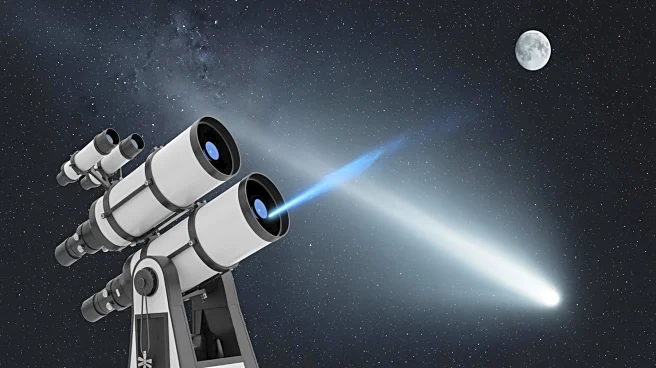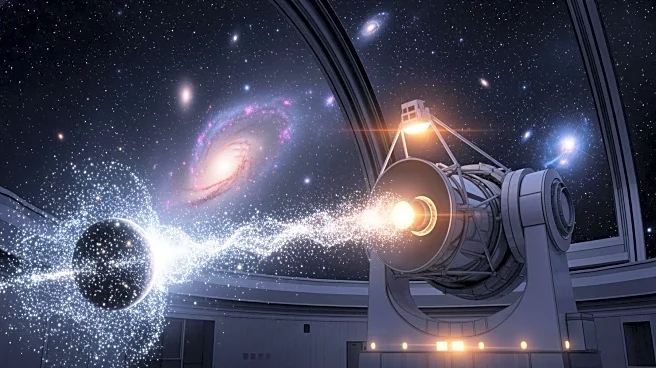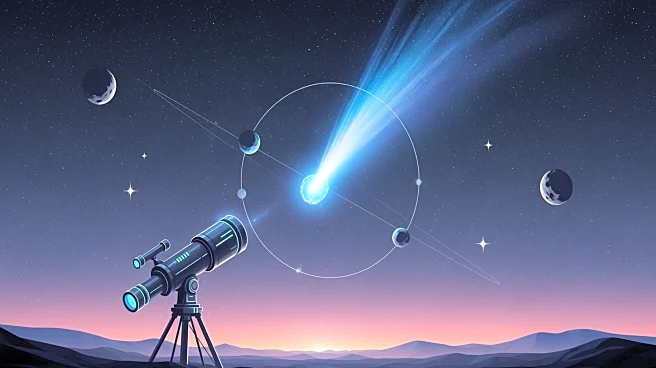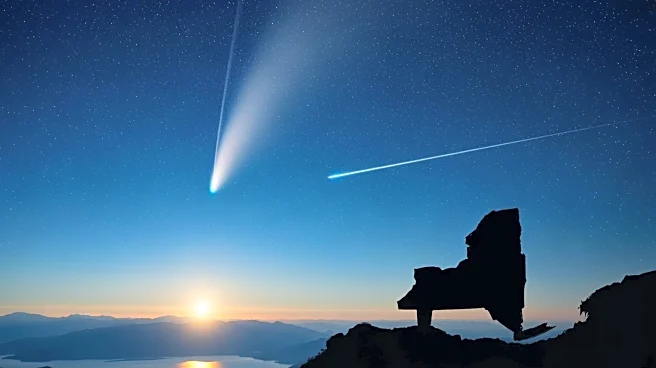What's Happening?
The interstellar object 3I/ATLAS has been observed displaying a unique sunward jet, as captured by the Two-meter Twin Telescope at the Teide Observatory in Spain. This observation follows a similar image
taken by the Hubble Space Telescope in July 2025, which showed an extended glow pointing towards the Sun. The jet extends approximately 6,000 kilometers from the object's nucleus, a feature that challenges traditional comet behavior, where tails typically point away from the Sun due to solar radiation and wind. The anomaly has sparked discussions among scientists, with some suggesting that the object behaves like a comet, while others, including Avi Loeb and Eric Keto, propose alternative explanations for the sunward jet.
Why It's Important?
The discovery of a sunward jet on 3I/ATLAS is significant as it challenges existing theories about cometary behavior and interstellar objects. This anomaly could lead to new insights into the composition and dynamics of such objects, potentially altering our understanding of solar system formation and the behavior of interstellar bodies. The scientific community stands to gain a deeper understanding of these phenomena, which could influence future research and exploration missions. The findings also highlight the need for continued observation and study of interstellar objects to uncover their mysteries and implications for planetary science.
What's Next?
Further research is expected to explore the nature of the sunward jet and its implications for our understanding of interstellar objects. Avi Loeb and Eric Keto are working on a follow-up paper to address the questions raised by this anomaly. The scientific community may also focus on developing new models to explain the behavior of 3I/ATLAS and similar objects. Additionally, upcoming observations, such as those involving the Europa Clipper and Hera spacecraft, may provide more data to refine our understanding of these phenomena.
Beyond the Headlines
The presence of a sunward jet on 3I/ATLAS raises questions about the classification and behavior of interstellar objects. This could lead to a reevaluation of how such objects are studied and categorized, potentially impacting the broader field of astronomy. The anomaly also underscores the importance of interdisciplinary collaboration in addressing complex scientific questions, as well as the role of advanced technology in capturing and analyzing astronomical phenomena.












